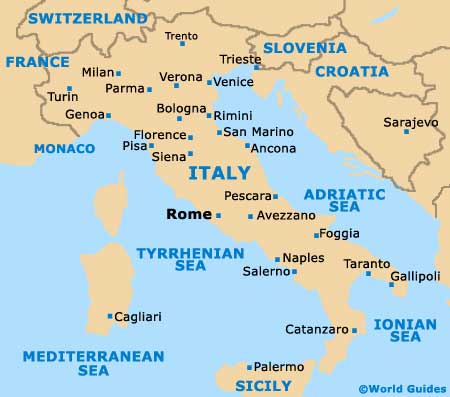Welcome to Enchanting Journeys
-
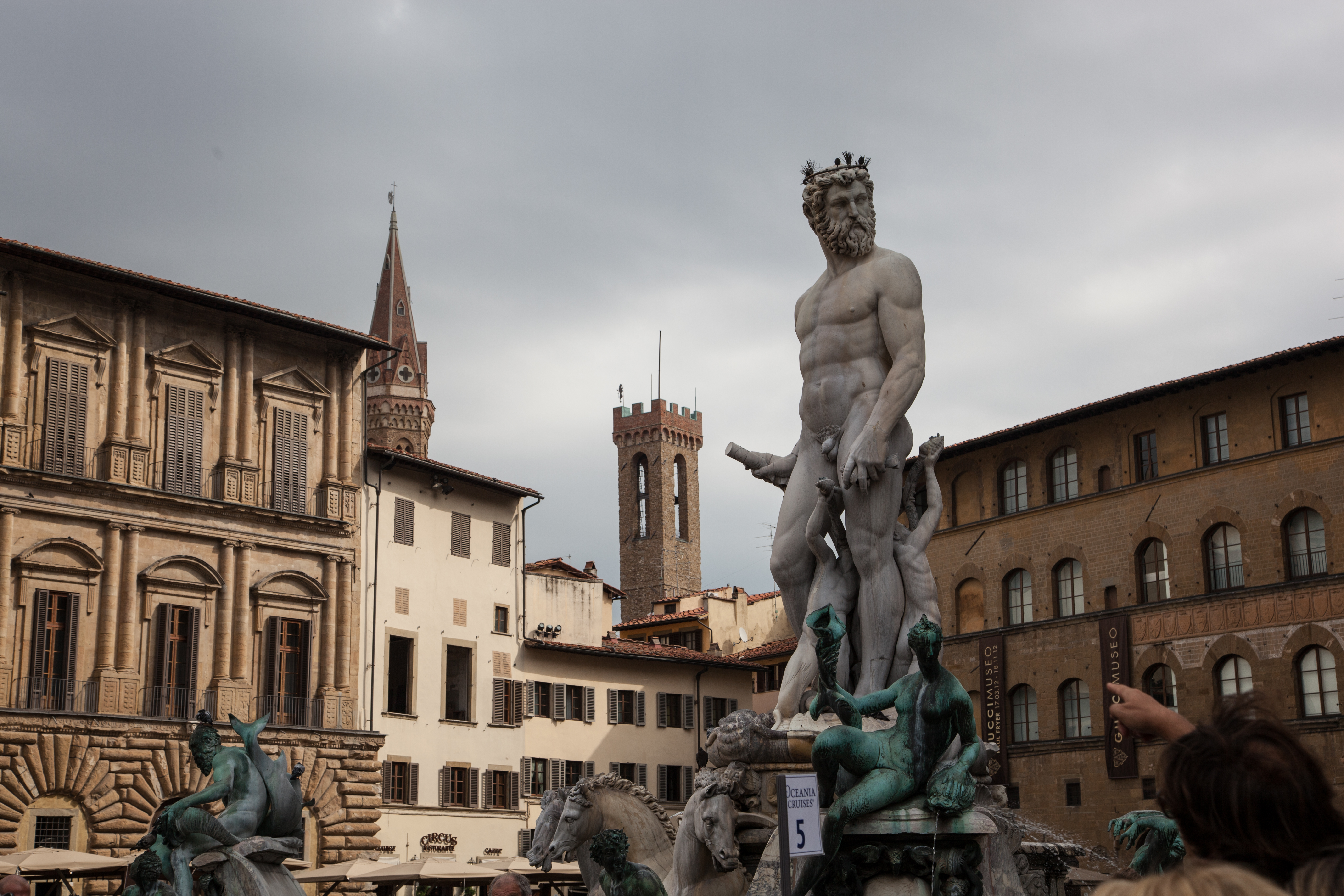 Italy
Italy
Coming soonFrom : $ Coming soonDiscover : -
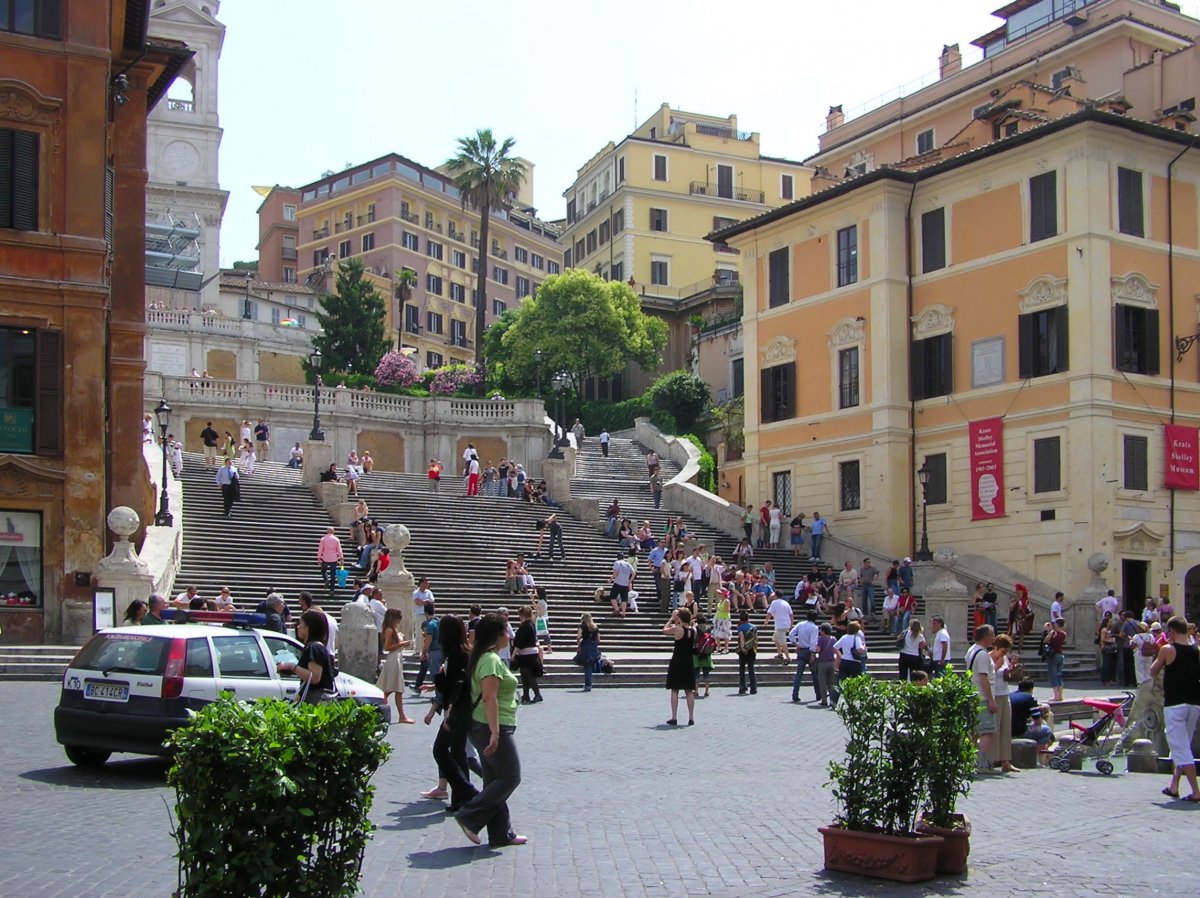 Italy
Italy
Coming soonFrom : $ Coming soonDiscover : -
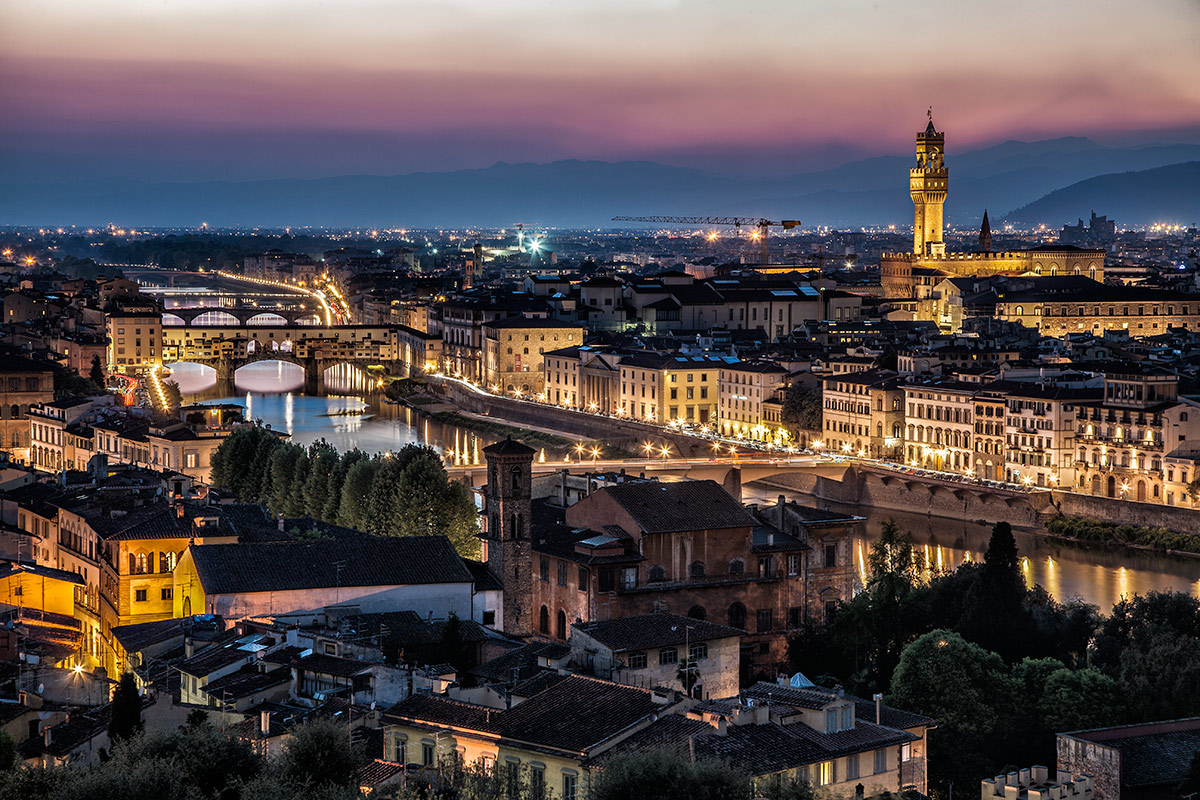 Italy
Italy
Coming soonFrom : $ Coming soonDiscover : -
 Italy
Italy
Coming soonFrom : $ Coming soonDiscover : - Italy
Coming soonFrom : $ Coming soonDiscover : Coming soonIncludes :• Coming soon -
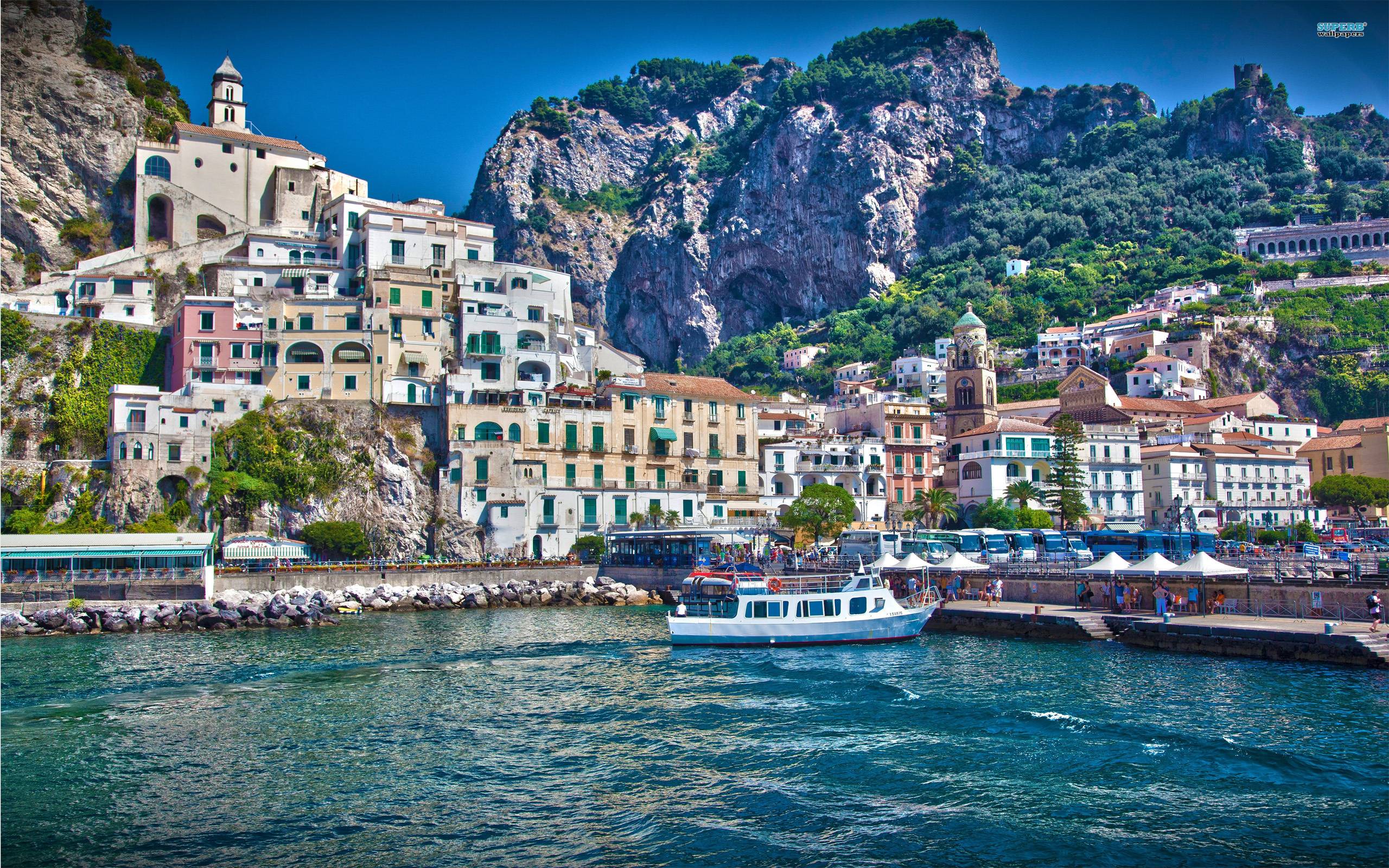 Italy
Italy
Coming soonFrom : $ Coming soonDiscover : -
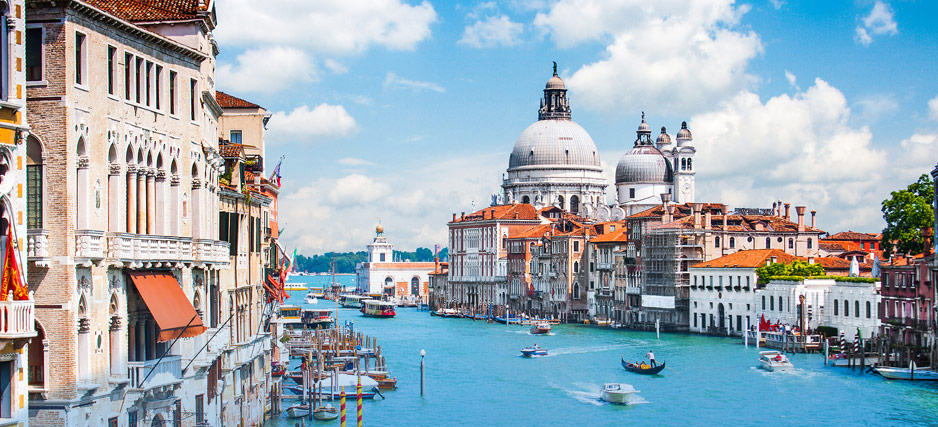 Italy
Italy
Coming soonFrom : $ Coming soonDiscover : Coming soonIncludes :• Coming soon -
5779.jpg) Italy
Italy
Coming soonFrom : $ Coming soonDiscover : -
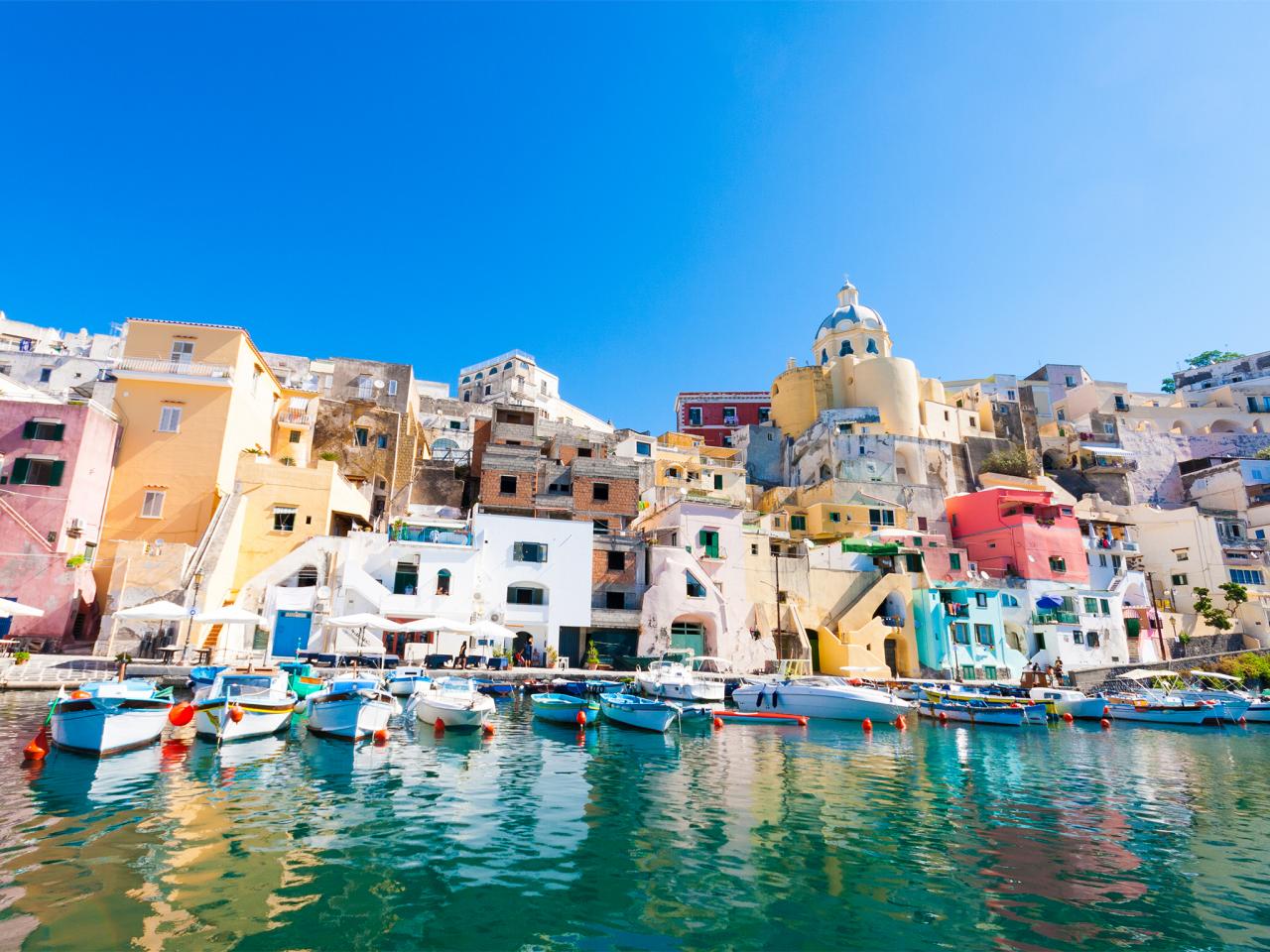 Italy
Italy
Coming soonFrom : $ Coming soonDiscover : -
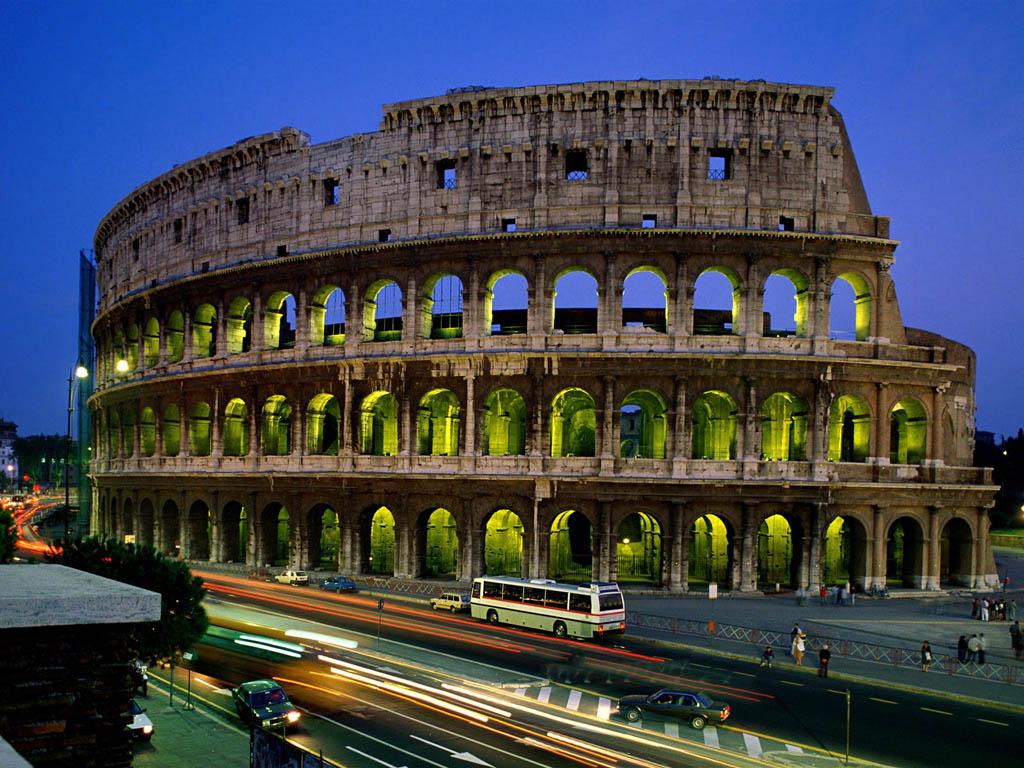 Italy
Italy
An Italian GlimpseFrom : $ Please requestDiscover : Rome * Florence * VeniceIncludes :• All Transfers with a Journeys Rep• Accommodation of 7 nights with B/fast• Services of an English speaking Guide• Entrance Fees• Private A/c Transport• 24/7 Assistance

Thank you.
alttag
- Overview
- Itinerary
- Inclusion
- Hotels
- Rates
- Information

Enchanting Italy….experience it now….
Hello Rome
“Rome was a poem pressed into service as a city” - Anatole Broyard
Europe is never boring & it stands the test of time, in more ways than one. Not only is it rich in history, it is also a destination that practically demands repeat visits. There simply is no way to tour Europe & not be awestruck by its scenic beauty, epic history, dazzling Artistic diversity. An intricate jigsaw of Landscapes, Cultures, Art & Architecture, Europe retains time-honoured Traditions while constantly evolving to incorporate inspired new Trends. Start your day in blissful Italy, an afternoon can be spent in quiet London with some of its beautiful tourist attractions & a starry night in Paris.
Teutonic half-timbered Villages, graffiti-decorated Renaissance Squares, medieval walled Towns….Wander the darkly Gothic narrow Alleyways of Prague, admire the baroque excess of Salzburg or take in the colourful old-Venetian influence on the Slovenian Port of Piran. Check out the medieval Masterpieces in Poland & Czech Republic & discover the quaint Townscapes throughout the Region – from Bern in Switzerland to Bardejov in Slovakia.
Italy is an incredibly varied & exciting vacation destination and an extraordinary feast of heart-thumping, soul-stirring Art, glorious Food, picturesque Landscapes rivalled by few & coveted by millions. Italy's 20 Regions feel more like 20 independent States, each with its own History, Dialects, Traditions, Architecture & Food. From nibbling on Knodel in an Alto Adige Chalet to exploring Souk-like Market Streets in Sicily, the choices are as diverse as they are seductive. A heady mix of haunting Sights, awe-inspiring Art & vibrant Street life. are just the beginning.
From nibbling on Knodel in an Alto Adige Chalet to exploring Souk-like Market Streets in Sicily, the choices are as diverse as they are seductive. Here, you will experience the true meaning of beauty & relaxation. Come…experience Italy with us…
Europe’s almost unmanageable wealth of attractions is its biggest single draw: the birthplace of Democracy in Athens, the Renaissance Art of Florence, the graceful Canals of Venice, the Napoleonic splendour of Paris & the multi-layered historical & cultural canvas of London. Less obvious but no less impressive attractions include Moorish Palaces in Andalucía, the fascinating East meets West brew of Istanbul, the majesty of meticulously restored imperial Palaces in Russia's former Capital St Petersburg & the ongoing project of Gaudí's La Sagrada Família in Barcelona.
There is a huge diversity of natural scenery: rugged Scottish Highlands with Glens & Lochs; Norway's fabulous Fjords, seemingly chipped to jagged perfection by Giants; the vine-raked Valleys of the Loire; & the steppe-like Plains of central Spain. If you are looking for Beaches, a Circuit of the Mediterranean's northern Coast reveals one gem after another. Or strike out to lesser known, yet beautiful coastal Regions such as the Baltic & Black Sea. With Mountains covering so many Central European States, it is no wonder that the outdoors holds such an attraction in the region.
The Alps rise to their highest in Switzerland, with jagged, Toblerone-like Peaks such as the Matterhorn, & march on through southern Germany, across Austria & south into Slovenia, taking in France, northern Italy & tiny Liechtenstein. You can Hike, Bike, Ski or just ride the Gondolas & Funiculars to enjoy the Alpine views.
Europe has some of the best Nightlife in the world. Globally famous DJs keep the party going in London, Berlin & Paris, all of which also offer top-class entertainment, especially Theatre & live Music. Other key locations for high-energy Nightlife include Moscow, Belgrade, Budapest & Madrid, while those hankering for something cosier can add Dublin's Pubs or Vienna's Cafes to their itinerary. Continue to party on the Continent's Streets at a multiplicity of Festivals & Celebrations, from city Parades attended by hundreds of thousands to intimate Concerts in an ancient Amphitheatre.
Once you have ticked off the great Museums & energetic Nightlife, what is left? A chance to indulge in a Culinary adventure to beat all others, that is what! Who wouldn't want to snack on Pizza in Naples, Souvlaki in Santorini or even Haggis in Scotland? Enjoy a plate of Pasta while admiring the Slovenian Coast, Nosh Pierogi (dumplings) on a Polish cobblestone Street or dip into Fondue, lakeside in Switzerland. But did you also know that Britain has some of the best Indian Restaurants in the world; that Turkey's Doner Kebab is a key part of contemporary German food culture; & that in the Netherlands, you can gorge on an Indonesian Rijsttafel (rice table)? Once again Europe's diversity & global reach is its trump card.
Beer Gardens across the Region offer an opportunity to enjoy hearty Food, a convivial atmosphere & a good brew Alfresco. Once the weather cools, move inside a boisterous Beer Hall. Or, for something a little sweeter, try a Cake at a Coffee House or Pastry Cafe. The most famous are in Vienna & Budapest, but you will find many options - & other interesting places to eat & drink - all across the Region. On mornings when the mists lie heavy & crowds are few, you might imagine yourself in an earlier century.
There are also sculptural sandstone 'rock towns' in the Czech Republic to Climb, waterfall-filled Gorges in Slovakia & Slovenia to Hike & the bucolic Black Forest in Germany to Walk. Central / Eastern Europe reveals a tapestry of quaint & contemporary cultures - always with enough rough edges to keep you intrigued.
However, what is impressive about Eastern Europe is how communally minded the Locals can be & how this makes for such a friendly experience for the Traveller. Falling into conversation with Locals on a Train or at a Cafe is commonplace. You will likely end up sharing Food & Drinks with them, listening to Folk Songs, learning a new Card Game or even being invited Home for Dinner.
Then, there is Repubblica Italiana, commanding a long Mediterranean Coastline, which has left a powerful mark on Western culture. Full of surprises, you will never tire of exploring this small but endlessly fascinating Country.
Art & Architecture | Rhythms | Landscapes | Gastronomy
Italy is the whole package, and it knows it. Covering 116,350 square miles of gorgeous Coastlines, Mountains & countryside with more than 2,700 years of History & Culture in all genres, it is hard to beat the cultural wealth & beauty of Italy’s daily life. Home to many of the World's greatest Works of Art, Architecture, Gastronomy & Fashion, Italy elates, inspires & moves like no other.
Italy's forte extends beyond its Galleries, Plates, Wardrobes & Dining Rooms. The Country is one of Mother Nature's Masterpieces, its Geography offering extraordinary natural diversity. From the North's icy Alps & glacial Lakes to the South's Volcanic Craters & turquoise Grottoes, this is a place for doing as well as seeing. One day, you are tearing down Courmayeur's powdery Slopes, the next you could be riding Cowboy-style across the Marshes of the Maremma, or Diving in coral-studded Campanian waters. Not bad for a Country not much bigger than Arizona.
Commanding a long Mediterranean Coastline, it has left a powerful mark on Western Culture & Cuisine. Capital City Rome leads the Country in the center-south Lazio Region & it is here where the reputation of Italian chaos comes from. Since its 753 BC founding, Rome has been the center of attention. It is also home to the Vatican as well as landmark Art & ancient Ruins.
Today’s Eternal City convenes millennia of Culture & millions of Residents & Visitors in its historic Center of approximately 5 square miles. Rome’s ancient history is seen every day in the contemporary Roman landscape whether it is driving past the Colosseum, watching the Pilgrims queuing up to flow into St. Peter’s Square.
Epicentre of the Roman Empire & birthplace of the Renaissance, this sun-kissed Virtuoso groans under the weight of its cultural cachet: it is here that you will stand in the presence of Michelangelo's Masterpiece Frescoes in David & Sistine Chapel, Botticelli's Birth of Venus & Primavera & Leonardo da Vinci's The Last Supper. In fact, Italy has more UNESCO World Heritage cultural sites than any other country on Earth. Should you walk in the footsteps of Saints & Emperors in Rome, revel in Ravenna's glittering Byzantine Treasures or get breathless over Giotto's revolutionary Frescoes in Padua? It is a cultural conundrum as thrilling as it is overwhelming.
And though Italy is united under 1 Country Code, it is a patchwork of personalities - 20 distinct Regions with distinctly different Traditions & Terrains. Since ancient times, the Cities of Rome, Florence with its Renaissance treasures such as Michelangelo’s "David" & its Leather & Paper Artisans, Venice, the sinking City of Canals & Naples, have topped the list of must-see destinations. The 21st century expands outward for full immersion into Italian culture with an extended lineup that includes the Beaches of the Amalfi Coast & Puglia, the powdery Slopes of the Italian Alps, Milan, the Fashion Capital of the World & the entire Island of Sicily.
Along with the must-see Cities, there are unparalleled experiences that you must do when in Italy, including eating a true Neapolitan Pizza in Naples, Climbing Sicily’s Mount Etna (an active Volcano), Driving a vintage Fiat along the head-spinning curves of the Amalfi Coast & through the Tuscan countryside taking a midnight Gondola ride around Venice, Walking to the top level of the Colosseum, eating anything in the “Food” Town of Emilia Romagna & exploring antiquity & architectural Ruins of the Empire at any ancient sites such as Pompeii, Paestum or Herculaneum.
All Italians would tell you the best way to get to know the country is simply to explore whatever is in front of you & on your Plate. Italy’s Cuisine varies from Region to Region & food-obsessed Italy feels more like a decadently stuffed Christmas Stocking. Emilia Romagna sits on the throne of the Country’s Gastronomic Circuit, known for its Parmigiano-Reggiano Cheese, Prosciutto di Parma, Balsamic Vinegar & incredible homemade Pasta specialties like Tortellini. Pizza & Pasta lovers, can head South to Naples & Rome and Meat aficionados go to Tuscany. Sicily is the Country’s Breadbasket for its incredible range of Fruit & Veggies, and Seafood & Desserts.
From delicate Tagliatelle al Ragu to velvety Cannoli, every bite can feel like a revelation. The secret: superlative ingredients & finely tuned know-how. And while Italy's Culinary Soul might prefer simplicity, it is equally ingenious & sophisticated. Expect some of the World's top fine-dining destinations, from San Pellegrino 'World's Best 50' hot spots to Michelin-starred musts. So, whether you are on a degustation odyssey in Modena, Truffle hunting in Piedmont. Wine, why not? There is no Region where you can’t find an amazing Bottle of Wine - Red, White or Bubbles - just look for the area’s Strade del Vino (Wine routes) to lead you in the right direction. Swill powerhouse Reds in the Valpolicella Wine Region & prepare to loosen that belt.
In few other places do Art & Life intermingle so effortlessly. This may be the land of Dante, Titian & Verdi, but it is also the home of Prada, Gualtiero Marchesi & Renzo Piano. Beauty, Style & Flair furnish every aspect of daily life, from those immaculately knotted Ties & perfect Espressos, to the flirtatious smiles of striking strangers.
Thanks to its unbeatable location in the Southern Mediterranean basin, the Climate is generally Mild in the Winters & Warm in the Summer, but here is rub: Weather varies notably from Region to Region. The northern Regions, like Lombardia, Piemonte, Veneto, & even Emilia Romagna tend to have harsher, longer Winters than their Southern counterparts like Sicily, Calabria & Campania where the hot Sun seems to shine for 10 months a year.
There is never a bad time to visit Italy, whether Winter or Summer, High or Low Season. From November through the end of February, Tourism tends to dissipate which makes sites less crowded & Museum Tickets are easier to reserve. Spring kicks into high gear during La Settimana Santa (Holy Week, the week leading up to Easter) & from that moment, Italy unleashes many Events & Holidays. In the Summer months, Italians head to the Beach or Mountains & by August, Rome & major Cities are veritable Ghost Towns.
Repubblica Italiana, home to many of the world's greatest works of Art, Architecture & Gastronomy & the Country elates, inspires & moves like no other. Seeing the Italy’s incomparable artistic treasures, which almost equals to more than the rest of the World put together, makes it hard not to feel a little envious sometimes & even harder not to fall madly in love.
And that epitomises the spirit of Rome - the “Eternal” City. Ancient Statues adorn world-class Museums, Byzantine Mosaics & Renaissance Frescoes dazzle in the City's art-rich Churches, baroque facades flank medieval Piazzas.
Walk around the Centre & without even trying, you will come across Masterpieces by the giants of the artistic pantheon - Canvases by Caravaggio, Frescoes by Raphael & Fountains by Bernini. It is here that you will stand in the presence of Michelangelo's Sculptures & Frescoes in Sistine Chapel.
A trip to Rome is as much about lapping up the dolce vita Lifestyle as gorging on Art & Culture. It is about relaxing into the City's Mediterranean rhythms & idling around the picturesque Streets. Whiling away hours at streetside Cafes & people-watching on pretty Piazzas are an integral part of the Roman experience. The tempo rises as the heat of the day fades into the evening cool & the fashionably dressed Aperitivo (aperitif) crowd descends on the City's Bars & Cafes. Restaurants & Trattorias hum with activity & cheerful hordes mill around popular Haunts before heading off to Cocktail Bars & late-night Clubs.
On this epic 3 night ‘Stopover’ discover the charms & landmarks of the “Eternal” City.
Concerned that you don't speak Italian or have a Degree in Regional History? Not to worry! Our local Offices are always there 24/7 to offer any assistance you might need.
Just sit back, relax & enjoy as you discover History & a unique experience & that is just a beginning. Enjoy a vast array of choices for the sights, sounds & culturally rich experiences. Yep, the “Eternal City” is waiting & The Journeys is ready to take you on well, a journey (or journeys) of discovery.
Come…be inspired & discover the World…
|
Hello Rome |
||
|
Day | Date |
City |
Transfers | Sightseeing |
|
Any Day |
|
|
|
01 | 00 | 0 |
Rome |
✈ Arrival Transfer | Free (balance of the day) |
|
02 | 00 | 0 |
Rome |
AM Vatican Museum & Sistine Chapel | Free (balance of the day) |
|
03 | 00 | 0 |
Rome |
Full day at leisure |
|
04 | 00 | 0 |
Rome |
Departure Transfer ✈ |
|
|
||
|
|
|
|

![]()

Enchanting Italy & you never thought about it
Hello Rome
Rome
4 Days | 3 Nights
Day 01 - | Arrive ✈ Rome at ????
Italy is an incredibly varied & exciting vacation destination and an extraordinary feast of heart-thumping, soul-stirring Art, glorious Food, picturesque Landscapes rivalled by few & coveted by millions. Italy's 20 Regions feel more like 20 independent States, each with its own History, Dialects, Traditions, Architecture & Food. From nibbling on Knodel in an Alto Adige Chalet to exploring Souk-like Market Streets in Sicily, the choices are as diverse as they are seductive. A heady mix of haunting Sights, awe-inspiring Art & vibrant Street life. are just the beginning.
From nibbling on Knodel in an Alto Adige Chalet to exploring Souk-like Market Streets in Sicily, the choices are as diverse as they are seductive. Here, you will experience the true meaning of beauty & relaxation. Come…experience Italy with us…
Arrive in the ‘eternal’ city of Rome, Italy’s hot-blooded Capital - one of the world’s most romantic & inspiring Cities.
After you exit in the Arrival Hall at Terminal? - Rome Leonardo da Vinci - Fiumicino Airport, subsequent to Immigration & Customs, you will be welcomed by The Journeys Representative (holding a Placard with your Name), who will ensure your comfort & transfer you to the Hotel, help you settle in & provide you with some useful tips for exploring the area as well as discuss the Program for the next day.
If, for any reason you are unable to make contact with our representative within 30 minutes of waiting, please call the local Emergency telephone # listed on your Contact List. Please follow the advice given by our 24 / 7 Duty Officer. Please do not exit the Airport & make your own way to the hotel unless advised.
Reach the Hotel & Check-in.
*Check-in time is 02.00 pm. For earlier arrivals in the morning, we will request the Hotel for a complimentary early Check-in but cannot be guaranteed unless reserved & paid for ‘immediate occupancy’.
Balance of the day is at leisure for independent exploration or for Optional activities we would be happy to offer suggestions & make arrangements).
“She never hides her years, but still wears them well: after all, Rome is the “Eternal” City.
Monumental History| Artistic Treasures| Roman Feasting| Living Life
With its unparalleled history, Rome is the 3rd most visited City in Europe behind London & Paris, making it a high contender for one of the most romantic Cities worldwide, attracting Visitors from all over, who come to explore the City’s impressive Monuments & Archaeological sites; not to mention its renowned Cuisine & lively atmosphere.
How was Rome, the City of 7 Hills, founded? How did it become an Empire? What was the role of the Catholic Church throughout Rome’s history? The exact origins of the City, are still somewhat of a mystery. There are ‘several’ theories, based on the writings of ancient Authors & Excavations. One myth is, Romulus & Remus - twin brothers, fathered by Mars, the God of War, who were nursed by a she-wolf, reportedly founded the City. Thus, the city was called after the elder brother. Romulus formed the Roman Senate with 100 men & prepared a body of Laws for the Inhabitants of Rome. And although Historians are obviously skeptical about this epic myth, most Travelers are absolutely certain that there is something magical about Rome.
Consequently, the information about the origin of the City, is based mainly on legends & myth, instead of solid facts. Even the existence of the Roman Empire was questioned for practically 2 centuries by renowned Historians. During the 19th & 20th centuries, they dismissed the idea of the early Kings of Rome (Romulus, Numa Pompilius, Tullus Hostilius) as well as the date of the founding of what would later become the Capital of Italy, in 753 BC. This part of history was merely considered a legend & not taken seriously. It was only during the late 20th century when, thanks to the findings of numerous archaeological digs & advancement in Sciences, that the myths surrounding the establishment of the City and its first Rulers, were reconsidered. It is believed that the very first inhabitants of Rome came from various parts of the Region & had neither the Economic nor the Cultural wherewithal of their northern neighbours, the Etruscans, nor the southern Civilization called the Sabines & Latins.
In Palatine Hill, Archaeologists found the remains of a primitive Settlement from the 8th century BC, with Burial Ground on the outskirts of the Village. It is thought that as the population grew, the Inhabitants settled on the slopes of the nearby Hills & during the next century, they established themselves in the Valley. Ancient Romans called it the “Eternal City” because they believed that no matter what happened in the rest of the World, the City of Rome would always remain standing.
Rome is ‘now’ known for a history that dates back to the eras of Octavian, Julius Caesar & Hadrian, among others. Left behind are structures like the Pantheon, the Roman Forum & dozens of Churches, among other historic gems. Art enthusiasts will relish the trove of Art housed at the Vatican Museums & Foodies will enjoy the splendid Italian fare, not to mention the Gelato. Rome is magnificent & overwhelming at the same time, a showcase of Western Civilization, with astonishingly ancient sights & a modern vibrancy.
Walking through the Streets of this ancient City, surrounded by glorious Monuments & colossal Archaeological remains, is a stroll through History with a capital H, taking you back in time, to the glory that was Rome. One of the most popular tourist destinations in the world, it offers & almost demands endless new discoveries, thanks to the enormity of its artistic heritage. As a matter of fact, it hosts 2 Capitals in one City: of Repubblica Italiana & Vatican City, Home of the Pope & a place of universal Pilgrimage for Catholics.
A heady mix of haunting sights, awe-inspiring Art & vibrant Street life, Rome is one of the world's most beautiful & inspiring Capitals. Few Cities can rival Rome's astonishing artistic heritage. Throughout history, the City has starred in the great upheavals of Western Art, drawing the top Artists of the day & inspiring them to push the boundaries of creative achievement. The result is a City awash with priceless Treasures. Ancient Statues adorn world-class Museums; Byzantine Mosaics & Renaissance Frescoes dazzle in the art-rich Churches; baroque facades flank medieval Piazzas.
The result of 3000 years of ad hoc urban development, Rome's Cityscape is an exhilarating spectacle. Ancient Icons such as the Colosseum, Roman Forum & Pantheon recall Rome's time as the fearsome hub of the Roman Empire, the caput mundi (Capital of the World), while Catacombs & clandestine Churches hark back to its historical role as Seat of the Catholic Church. Lording it over the Vatican, St Peter's Basilica is the greatest of the City's monumental Basilicas, a towering masterpiece of Renaissance architecture. Elsewhere, ornate Piazzas & elaborate Churches add a baroque flourish to the City's historic Streets.
A trip to Rome is as much about lapping up the dolce vita Lifestyle as gorging on Art & Culture. It is about relaxing into the City's Mediterranean rhythms & idling around the picturesque Streets. Whiling away hours at Street Cafes & people-watching on pretty Piazzas are an integral part of the Roman experience. The tempo rises as the heat of the day fades into the evening cool & the fashionably dressed aperitivo (aperitif) crowd descends on the City's Bars & Cafes. Restaurants & Trattorias hum with activity & cheerful hordes mill around popular haunts before heading off to Cocktail Bars & late-night Clubs.
Walk around the Centre & without even trying, you will come across Masterpieces by the giants of the artistic pantheon - Sculptures by Michelangelo, Canvases by Caravaggio, Raphael Frescoes & Fountains by Bernini.
Rome at night is unparalleled by any City in the world. Experience the Eternal City at its best & it will be truly memorable. Why not begin your discovery of Rome by taking a stroll along some of the charming Avenues & Boulevards, Shop in charming Boutiques or simply people-watch from a sidewalk Cafe?
Overnight.
Day 02 - | Rome
Morning, proceed (on your own) to Vatican Museums entrance in Piazza di Spagna to meet the Tour-guide - at 08.30 am - & embark on a - 4 hour - tour of the Museums & Sistine Chapel.
Vatican, headquarters of the Roman Catholic Church & Home of the Pope, is a City-state surrounded by & historically a part of Rome. The World’s smallest “sovereign” State, sits over the river from Rome's historic Centre. It became independent from Italy in 1929 with the Lateran Treaty & is a distinct territory under "full ownership, exclusive dominion, sovereign authority & jurisdiction" of the Holy See, which is itself a sovereign Entity under international law, maintaining the City-state's Temporal Power, Governance, Diplomatic & Spiritual Independence.
Governed by the Holy See, dating back to early Christianity is the principal episcopal See of the Catholic Church, which has approximately 1.329 billion baptised Catholics in the world. The ecclesiastical Vatican City-State is ruled by the Pope, who is the Bishop of Rome & head of the Catholic Church. After the Avignon Papacy (1309 - 1377) the Popes have mainly resided at the Apostolic Palace within what is now Vatican City, although at times, residing instead in the Quirinal Palace in Rome or elsewhere.
In 1870, the Pope's holdings were left in an uncertain situation when Rome itself was annexed by Italian Forces, thus bringing to completion the Italian Unification, after a nominal resistance by the Papal Forces. Between 1861 & 1929, the status of the Pope was referred to as the "Roman Question". Italy made no attempt to interfere with the Holy See within the Vatican walls but they did confiscate Church property in many places. In 1871, the Quirinal Palace was confiscated by the King of Italy & became the Royal Palace.
Thereafter, the successive Popes resided undisturbed within the Vatican walls but they did not recognise the King's right to rule in Rome & refused to leave the Vatican Compound until the dispute was resolved in 1929. Certain Papal prerogatives were recognised by the Law of Guarantees, including the right to send & receive Ambassadors. Pope Pius IX (1846-1878), the last Ruler of the Papal States, was referred to as a "prisoner in the Vatican". Forced to give up secular power, the Popes from then on, focused on spiritual issues.
Vatican Gardens, decorated with Fountains & Sculptures, account for about half of the territory of Vatican City, covering approximately 23 hectares. The Gardens date back to medieval times when Orchards & Vineyards extended to the north of the Papal Apostolic Palace. In 1279, Pope Nicholas III (Giovanni Gaetano Orsini, 1277-1280) moved his residence back to the Vatican from the Lateran Palace & planted an Orchard, a Lawn & a Garden, building a Wall around the Complex.
Radiating out from the domed grandeur of St Peter’s Basilica, Vatican City contains religious & cultural sites such as the Sistine Chapel, the Vatican Apostolic Library & the vast Vatican Museums, boasting some of Italy’s most revered iconic Artworks featuring some of the world's most famous Paintings & Sculptures.
The unique economy of Vatican City is supported financially by Donations from Catholic believers, by the sale of Postage Stamps, Souvenirs & Publications & Admission Fees from the Museums, Vatican City has no Taxes, & all Items are Duty-free.
Commence your ‘guided’ tour (priority access, bypassing the long Lines), to exploring one of the world's most impressive & extensive Collections belonging to the Catholic Church, with more than 70,000 artifacts in a 42,000meter area. A timeless treasure, where History & Art converge in one of the world’s most iconic cultural landmarks.
The Museums were originally founded in the 16th century by Pope Julius II to display the Vatican’s Collection of classical Sculptures. The first pieces were laid out in 1506 in the Cortile Ottagono (Octagonal Courtyard), where many remain to this day. Julius also commissioned 2 of the top Artists of that age to work on the Vatican Palace – Raphael to decorate his private Apartments & Michelangelo to paint the Sistine Chapel.
Over the centuries, the successive Popes continued to add to the Collections & open new Museums. Major developments included the establishment of the Museo Pio-Clementino in the late 18th century & the opening of the Etruscan & Egyptian Museums by Pope Gregory XVI in the 1830s. More recently, Pope John Paul II oversaw a lengthy restoration of the Sistine Chapel & a Museum-wide spruce-up for the year 2000 Jubilee.
Musei Vaticani (Vatican Museums) are one of the world’s largest, busiest & most spectacular Museum Complexes, encompassing of 26 Museums with 7 km of Halls & Galleries, housing the Art & Antiquities amassed by successive Popes over the centuries, including ancient Roman Sculptures such as the famed “Laocoon & his Sons”. A 1 way system funnels you through the Sala Sobieski & on to Stanze di Raffaello (Raphael Rooms), a series of 4 Rooms frescoed by the Renaissance Maestro.
This expertly curated 4 hour tour takes you on a journey through the Vatican’s most iconic spaces. Every step reveals the stories, context & brilliance behind these works of Art.
Work your way through Sala Croce Greca (Greek Cross Room), from where the Simonetti staircase leads up to the Galleria dei Candelabri (Gallery of the Candelabra). Push on through this to the Galleria degli Arazzi (Tapestry Gallery) & the intricate Galleria delle Carte Geografiche (Map Gallery), a stunning 120 metre long Hall lined with remarkable 16th century Maps.
Anywhere else these magnificent Chambers would be the star attraction but here they are just the warm-up act for the grand finale - the Sistine Chapel. The jewel in the Vatican crown, the Cappella Sistina houses 2 of the world’s most famous works of Art - Michelangelo’s ceiling Frescoes (1508-12) & his Giudizio Universale (Last Judgment; 1536-41).
The 800 sq-meter ceiling design - best viewed from the far east wall - centers on 9 Panels depicting stories from the Book of Genesis. The most famous image, the Creation of Adam, shows a bearded God reaching out to touch fingers with Adam & so bring him to life. On the west wall, the mesmeric Giudizio Universale (Last Judgment) shows Christ passing sentence over the Souls of the Dead as they are torn from their Graves to face him. The “saved” get to stay up in Heaven while the “damned” are sent down to face the Demons in Hell.
Before exiting the Chapel, take time to check out the Frescoes on the side walls. Painted by a crack team of Renaissance Artists, these include Botticelli's Temptations of Christ & Perugino's great masterpiece, the Handing over of the Keys.
As the Tour-guide providing expert & unfiltered truth into the life of legendary Artists & the legacy of the Patrons who shaped the Vatican's history, leads you to St. Peter’s Basilica, revealing its masterpieces - the Pieta by Michelangelo & the internal decorations by Bernini,
The Tour ends in St. Peter’s Square.
Return to the Hotel (on your own).
Balance of the day is at leisure for independent exploration or Optional activities (we would be happy to offer suggestions or make arrangements).
Overnight. B
Day 03 - | Rome
Today, you have the time at leisure to do as you please... whatever you feel like (we would be happy to offer suggestions or perhaps you might want to try one of the our “Optional” tours available here).
To enable you to get around the City, we have included a 24 hour Hop On Hop Off Ticket which allows you to get on & off the double-decker Tourist Bus (with multi-lingual Audio-guide) at multiple Stops on pe-defined Routes, making it easy to access various Attractions & and areas of interest. It is ideal for those who want to go sightseeing on their own to discover the most famous symbols of Rome, such as the Colosseum, Piazza Navona, Trevi Fountain, Pantheon, Spain Square etc.
Let the Eternal City enchant you as you stroll through its picturesque cobblestone Alleyways & discover some of the world’s most famous sites, all in a single afternoon!
We especially recommend a guided 4 hour ‘guided’ tour of the Colosseum, Rome's most famous ancient site, Roman Forum & Palatine Hill.
Head into the Colosseum to walk in the footsteps of Gladiators, Emperors & Plebeians as tales of the brutal Games ring in your ears. The Tour-guide will describe the spectacular Combats, Sea Battles, wild Animal Hunts, & other Events which could last up to 100 days! You will get a glimpse into the Roman Empire's displays of power & entertainment. It's imposing construction with almost 2,000 years of history, will bring you back in time to discover the way of life in the Roman Empire.
Romans were famous for their love of entertainment - the bloodier the better, in their opinion. The Colosseum is a monumental Amphitheater in the heart of Rome, was constructed between 72 AD & 80 AD under the Roman Emperor Vespasian & is considered one of the greatest testament of ancient Roman Engineering. It was initially called Amphitheatrum Flavium, after the Flavian dynasty of Emperors including Vespasian, Titus & Domitian.
Under the Empire’s motto of "Bread & Circuses" the Colosseum allowed more than 50,000 people to enjoy its finest Spectacles.
The Colosseum was primarily used for the Exhibitions of exotic Animals, executions of Prisoners, recreations of Battles & public Gladiator fights & kept the poor Roman masses people entertained for nearly 400 years. The last recorded Games in history were celebrated in the 6th century. From then onwards, the Colosseum has suffered Lootings, Earthquakes & even Bombings during World War II. It is the largest elliptical Amphitheatre ever built in the world & despite its age, about one third of the Complex still remains, today.
The original labyrinth of vaulted Rooms beneath the Arena was built over a number of years after the inauguration of the Amphitheatre by Emperor Domitian. Elevators on Pulley systems were used to lift huge, hinged Platforms that allowed the Gladiators & Animals to walk out on the wooden floor of the Arena, covered in sand to prevent the Combatants from slipping & to soak up spilled blood.
Some ancient sources reveal that “prior” to the construction of the Hypogeum (Underground level) using blocks of tufa & brick, the Central area used to be flooded to stage massive epic Naumachiae (naval battles) using mockup of Ships.
The Hypogeum was divided into 15 Corridors set to the side of a Central Gallery along the longest axis of the building (east-west) & the Stage Props, Machinery, Armouries & Cages for the Animals were all stored here. It was riddled with secret Passageways & Trap Doors. Today, the network of Tunnels is exposed to the air, but originally lay hidden beneath the Arena floor. This lower level was also used for the various complex operations of the Amphitheatre & Hydraulic infrastructure & Hoists operated by Capstans (winch) served to lift up the Men & Equipment to appear at the centre of the Arena above. The Animals were confined in Cages which were raised 30 feet by Elevators to the Tunnels on 4 sides of the Arena level & were trained to launch at their enemy as soon as the Trap Doors opened.
The Central Gallery continued beneath the eastern Entrance towards the Ludus Magnus, the most important Gladiator School, the remains of which can still be seen just outside the Colosseum between Via Labicana & Via di San Giovanni in Laterano. By following this ‘secret’ passage, the Gladiators could reach the Arena directly without being seen. The Emperor also used a sub-terranean Corridor called Passaggio di Commodo (Passage of Commodus), the “Passage of Commodus”, enabling him to arrive without having to pass through the crowds in the Square at front of the Amphitheatre.
Running the mammoth Colosseum, required a large Workforce. Some Workers could be seen by the Spectators as they swept & cleaned, guarded the Entrances & lugged heavy ‘crowd control’ Safety Fences into place. But most worked underground. While the Gladiators fought & the Lions roared overhead in the Arena above, dozens of Workmen & Slaves toiled in the maze of Corridors, Elevators, Stairs, Store Rooms that lay hidden beneath the Colosseum, far from public view.
The Seating Area featured the most remarkable technological marvel of that time - a retractable Roofing made from the Canvas was utilized to offer shelter from the scorching Sun to the Spectators. While the audience focused on the bloody events in the Arena, the dark, lit only by smoky oil Lanterns, Hypogeum below, reeking from years of accumulated Human & Animal smells, was a scene of furious activity as Workers performed their backbreaking jobs in humid Summer & chilly, damp Winter. It was also. deafeningly loud, with an overwhelming din of creaking Machinery, people shouting, animals growling & loud ‘Command’ signals made by Horns or Drums to coordinate the complex series of Tasks being carried out.
Then, when it was all over, there was an eerie calm - but the work continued. After the Spectators left the Colosseum, a powerful atmosphere of death & decay lingers in the underground Passageways. Blood drenched Carcasses of Animals lie everywhere, along with the Corpses of executed Criminals, horribly mutilated by the Lions & Tigers. But since there may well be another show within a few days, perhaps even the very next day, everything has to look clean again & a dispiriting Task now begins: clearing out all the Corpses & Carcasses.
It might be hard to believe, but throughout the medieval era, the Colosseum wasn't a particularly important building. Its ‘arches’ were rented out for use as Workshops & Warehouses & it even housed a small Chapel. And its stone was quarried for use in other buildings around the City. During the 16th & 17th century, Church officials sought to make a profit from the Colosseum & Pope Sixtus V planned to turn the building into a Wool making Factory to provide employment for Rome's Prostitutes, but fortunately, this idea was never followed through.
When the popularity of Bloodsport & large Gatherings dwindled, the Colosseum went into a period of disuse. Secluded from the busy Streets, the Ruins became a jungle & a unique habitat for a staggering variety of 242 species of Plants, initially catalogued by the Physician Domenico Panaroli in 1643.
While it is impossible to know the exact number of people perished within its walls., Scholars estimate it to be around 400,000, including Gladiators, Slaves, Convicts, over its 400 year lifespan. In addition to Human deaths, it is estimated that over a million Animals were killed here.
The Tour ends & accompanied by the Tour-guide, you walk over next door to the Roman Forum, an impressive - if rather confusing - spread of Ruins, the area was ancient Rome's showpiece Center, lined with Shops & open-air Markets, a grandiose District of Temples, Basilicas & vibrant scene of Public Meetings, Law Courts & even smaller Gladiator Games in republican times.
The Tour-guide will lead you through the Ruins, explaining the history & the importance of the Forum. Note the gorgeous “white Marble the Romans used extensively throughout the Complex. There is something truly magical about walking in the footsteps of Julius Caesar & other legendary figures. Along with the Colosseum, the Forum is greatest sign of the splendor of the Roman Empire that can be seen today.
Interestingly, the site, originally a marshy Burial Ground, & in 6th century BC, the area was drained by means of Cloaca Maxima, probably one of the first Sewer Systems in the world. The Development progressed over time, to become the Political, Religious & Commercial Hub of the Roman Empire. On any given day, it hummed with activity as Shoppers thronged its teeming Streets, Senators debated Affairs of State & Lawyers hustled in its busy Law Courts.
Like many of ancient Rome's urban developments, after the fall of the Empire, the Forum fell into disrepair & was used as pasture land. Gradually, it was forgotten & in time, was buried under the earth. Although the existence & location of the Forum became known to Scholars in the 16th century, it was not until the 20th century that Excavations were carried out.
In the Middle Ages, it was known as the Campo Vaccino (Cow Field) & extensively plundered for its stone & marble. The area was systematically excavated in the 18th & 19th centuries & Archeologists continue working to this day.
Entering at the Arco di Tito, Visitors see the Triumphal Arch right in front. Supposedly the inspiration for Paris’ Arc de Triomphe, this martial landmark was built by Emperor Domitian in 81 BCE to celebrate his brother Titus' victories over the Jewish Rebellion in Judea & the 70CE sack of Jerusalem. In the past, Roman Jews would avoid passing under the Arch, which is considered the historical symbol of the beginning of the Jewish Diaspora in Italy. Off to the right of the Arch, the light-filled Museo del Foro showcases finds from Excavations in the early 20th century. It also gives access to a part of the Tempio di Venere di Roma, the largest Temple the Romans ever built.
The 23 metre high Arch of Septimius Severus at the northwestern end of the Forum, is a white marble Triumphal Arch built in 203 AD, to commemorate the Victories of Emperor Caesar Lucius Septimius Severus & his 2 Sons, Caracalla & Geta in the 2 Campaigns against the Parthians of 194-195 & 197-199.
See the Basilica of Maxentius (or Massenzio or Basilica Nova or Basilica of Constantine), the largest building on the Forum, with its vast arched Vaults & hulking brick construction, started by Emperor Maxentius in 308, who was later defeated by Constantine the Great, in the Battle of the Milvian Bridge. Constantine then, oversaw the building's completion through 315CE & relished the satisfaction of completing Maxentius' Project.
The colossal Basilica, originally measuring 100 metre by 65 metre, roughly 3 times what it now covers, was a was a multi-functional building used as a Courthouse, Council Chamber & Community Hall. It was also the last, built in the monumental Center of Rome. A colossal Statue of Constantine, pieces of which are on display at the Capitoline Museums, was unearthed here in 1487.
From the Basilica, walking on Via Sacra, the main thoroughfare, leads into the heart of the Forum where some key Temples can be seen.
At the foot of the Capitoline Hill on the western end of the Forum, you will see 8 granite Columns, all that remain of the ancient Tempio di Saturno (dedicated to God Saturn), one of the landmark sights. The important Temple was inaugurated in 497 BC & subsequently rebuilt in the 1st century BC, & also doubled as the State Treasury.
You will see the circular Tempio di Romolo & beyond that, the columned Tempio di Antonino e Faustina, a 2nd century CE Temple that was subsequently converted into a Church. Opposite, the Tempio di Giulio Cesare (also known as the Tempio del Divo Giulio) stands on the spot where Julius Caesar was cremated after his assassination in 44 BCE.
Nearby, 3 white Columns are all that remain of the 5th century BCE Tempio di Castore e Polluce. Right next are the remnants of Tempio di Vesta, a revered Temple whose sacred flame was kept alight by Vestal Virgins from the adjacent Casa delle Vestali (the building with the central grassy atrium).
Tucked away on the far side of the Forum is the 6th century Chiesa di Santa Maria Antiqua, the oldest & most important Church on the site. A treasure trove of early Christian Art, it contains some exquisite 6th - 9th century Frescoes & a hanging depiction of Virgin Mary with Child, one of the earliest Icons in existence. From inside the Church, you can also access the Rampa di Domiziano, an underground Passageway the Emperors used to enter the Forum from their Palaces on the Palatine Hill.
And now, walk to the final Stop.
Palatino (Palatine Hill) which relative to the famous 7 Hills (Aventine, Celio, Capitol, Esquiline, Palatine, Quirinal, Viminal) which together form the heart of Rome, "the first nucleus of the Roman Empire", is the most central of the 7. Birthplace of the Rome & is believed to have been inhabited since the year 1000 BC.
In Roman mythology, when King Nimitor was dethroned & imprisoned by his brother & his daughter Rhea Silvia was forced to become a Vestal Virgin so that she would not be able to provide a male heir to the Throne. Nevertheless in prison, she gave birth to twins, Romulus & Remus, whose father was thought to be Mars, the God of War. The King found out & ordered the babies to be killed. However, the servant in charge of the task took pity on them & instead placed the Twins into a Basket & pushed them down the Tiber River & the Basket safely floated to the area of the 7 Hills, where the boys were found by a she-wolf called Lupa who nursed them in her Lair in Palatine Hill. Until eventually, they were found by a Shepherd & his wife, who raised them. As adults, Romulus & Remus evolved into 2 natural Leaders & eventually, restored their Grandfather Nimitor to the Throne as King of Alba Longa. Seeking to establish their own Settlement, Romulus finally built a Wall around Palatine Hill & chose the location for the founding of Rome.
An atmospheric area of towering Pine trees, majestic Ruins & memorable views, the Palatino (Palatine Hill) is the birthplace of Rome.
Archaeological excavations have unearthed evidence of Iron Age Settlements (around the 9th century BC) on the Hill but much of what you see today dates to Roman times. In fact, much of the site is covered by the ruins of a 1st century CE royal Residence which served as the main imperial Palace for 300 years.
Palatino is central to the City’s creation in 753 BC. The City flourished and by the 1st century BC, the Hill had become Rome’s most exclusive neighborhood & its cooler, cleaner air & position above the Roman Forum led many wealthy Patricians to set up ostentatious Homes here & whose traces can be seen today. This where the Roman Emperors decided to build their increasingly opulent Palaces & lived in unabashed luxury.
On Palatino, the remains of many Palaces belonging to Emperors Augustus, Tiberius & Nero can be seen. Visitors can also access underground Tunnels, such as Domitian's secret passage, the Farnese Gardens, a Museum & the area of where the ancient Hut of Romulus & Remus (the City's founders) was believed to be located.
The ruins can be complicated to decipher but look out for the Stadio (Stadium), the Domus Flavia & Domus Augustana (the public & private parts of the Palace) & 16th century Orti Farnesiani, a Renaissance Garden, one of Europe's earliest, with a monumental balcony providing picturesque views over the Roman Forum.
After the fall of the Roman Empire, the area was pretty much abandoned until rich Renaissance families reclaimed the land, building Villas in the ruins & laying out Gardens & Vineyards.
Overnight. B
Day 04 - | Depart ✈ Rome at ???
Alas, the experience comes to an end & it is time to say good-bye to the warm Italian hospitality & heritage & go home.
Check-out of the Hotel by 11: 00 am (if the departure time is later in the evening, we will request the Hotel to allow the usage of the Facilities & to leave the Luggage at the Bell Desk).
Still Europe’s secret, a hidden treasure on the touristic map with beautiful clean cities. It is where East meets West, North meets South - literally & lyrically. It is where you can see influences of different cultures intertwine. From soaring mountains to golden sands,
Europe reveal a tapestry of quaint & contemporary cultures - always with enough rough edges to keep you intrigued. We are sure, Repubblica Italiana may entice you to come back.
“Traveling – it leaves you speechless, then turns you into a storyteller” - Ibn Battuta
In time, you will be met by a Journeys Rep, who will ensure your comfort & transfer you to Terminal? - Rome Leonardo da Vinci - Fiumicino Airport, for your onward journey. B
*** End of Services ***

Enchanting Italy….prepare to be charmed
Hello Rome
- Transfers to / from Hotel / Airport by private air-conditioned Vehicle
City Tours / Excursions by private air-conditioned ‘shared’ vehicle or Public Transit- Services of a Journeys Rep / Driver for assistance on all Arrival / Departure Transfers, as indicated
- Hop Off, Hop On 24 hour Ticket
- Accommodation for a total of and 3 nights in the selected Accommodation
- Meals as per Itinerary (B=Breakfast, L=Lunch & D=Dinner)
- Services of English speaking local Guides (or Audio commentary) for all Sightseeing Tours / Excursions as per Itinerary*
- Entrance Fees at the Monuments, wherever indicated
- All Government Taxes & Service Fees, wherever applicable
- 24 / 7 Emergency Contact
- International flights
- Visa or Fee for Italy (Canadian & US citizens do not require a Visa but need to complete an ETA prior to Departure)
- Airport Tax, if any
- City Tourist / Hotel Tax of € 2.00 per person per day, is to be paid directly
- Any Transfers not specifically listed
- Camera / Video Fees, wherever applicable, at the Monuments
- Items of personal nature i.e. Room Service, Laundry, Telephone Calls, Internet, Fax, Beverages, Medical or Evacuation Expenses, Insurance, Gratuities & Tips
- Any Meals not specifically listed in the itinerary
- Any optional Programs / Services
- Any items not specified under Inclusions
*Seat in Coach. Guaranteed departures with minimum 2 people. There may be other Participants & Group size may vary. Participants may come from all over the world & most of them will be English speaking. Private Tour with English speaking Guide & vehicle can be arranged with a supplement cost.
**Please note that the Program highlights the main attractions that are to be visited each day. The sightseeing tours combine ‘walking’ & driving. Some places you will see from inside, some from outside only. Some Monuments / places may require extra Entrance Fees to be paid for accessing some of the areas.
.
*** It is extremely rare that Programs need to be changed but it can occur. We reserve the right to change, amend or alter the Itinerary if required, for example occasionally the tour sequence & duration of time spent in each city can change due to local conditions which are out of our control or due to heavy traffic conditions or bad weather. The Price will not be affected.
****Conditions related to specific Tours will be advised in due course.

Enchanting Italy...prepare to be charmed
Hello Rome
Where you will stay:
|
Hello Rome |
||||
|
City |
Nights |
Superior *** |
First Class **** |
Deluxe***** |
|
Rome |
3 |
Giglio Dell Opera |
Ariston |
Palace |
|
|
||||
|
3 |
|
|
|
|
The Journeys has carefully selected each Hotel based on overall Quality, Location, Price, Food, Service & Cleanliness. All Rooms are standard with 2 Beds & private Facilities, unless you have specifically requested & paid for an Upgrade. Room selection is strictly at the discretion of the Hotel Staff. We reserve the right to make substitutions with those of equal standard due to non-availability of the selected Hotels.
Check-in time is usually 2:00 pm or later. Check-out time is 11:00 am. If you will be arriving early in the day or departing in the evening, Hotels will usually allow you to store your Luggage in their Luggage Room – pre Check-in or post Check-out. If required, we will request the Front Desk on your behalf, if the Hotel can offer “complimentary” Early Check-in or Late Check-out.

Enchanting Italy... time to go is now….
Hello Rome
And last but not least:
Departures:
Arrive in Rome on Any Day (minimum 2 Guests)
Validity:
→ December 2025
Prices:
We offer several Accommodation choices for this Tour. The price varies by selected Accommodations. The Itinerary remains unchanged.
Exchange rates fluctuate with great frequency. As Rates are very fluid currently due to a host of reasons, there may be a slight change in the Pricing. Your personalised Proposal will depict the applicable Price.
|
Hello Rome |
|||
|
Price Per Person - C$ |
Superior *** |
First Class **** |
Deluxe***** |
|
Occupancy |
|
|
|
|
Double |
On Request |
568.00 |
On Request |
|
|
|||
|
Supplement |
|
|
|
|
Single Occupancy |
On Request |
On Request |
On Request |
|
Rome Omnia Card 24 hours |
Included |
Included |
Included |
|
Rome Omnia Card 48 hours |
On Request |
On Request |
On Request |
|
Airfare - International |
12 - 1500 |
12 - 1500 |
12 - 1500 |
|
Miscellaneous |
TBA, if required |
TBA, if required |
TBA, if required |
|
|
|||
|
|
|
|
|
* Supplements, if applicable, are to be advised at the time of Proposal / Booking.
** Airfare fluctuates by the minute & the approximate range listed is for illustration only. Actual fare to be advised at the time of Booking.
Some important notes
- Flights are subject to constant modifications / delays and cancellations. In such cases, we will do all possible to find the best available alternative / solution but will not accept any liability, whatsoever.
- Our rates only include those items which are specified in the Itinerary / Inclusions.
- The cost has been calculated on the existing tariffs / conditions and in case of any currency fluctuations or amendment in local Government taxes, or any fuel hike, we reserve the right to revise the tour price accordingly.
- Our quotations are calculated on base category of accommodation at each property and are subject to modification, if the same hotel / category of room not available at the time of reservation. In that case, we will confirm a superior category of room at a comparable or better hotel and supplement charges, if any, shall be advised accordingly. Final Itinerary will illustrate updated information and / or it would be furnished at the time of confirmation.
- All prices are per person, based on double occupancy, and subject to availability at the time of booking. The from price reflects the lowest available price at time of publication, which is valid for a specific start date or dates and also based on availability at the time of booking.
- Room availability is getting saturated due to heavy demands from the tourism industry, international Fairs and Congresses. Due to these constant sold- out situations the hotels are applying the cancellation rules more stringently. Once the reservation is guaranteed, the booking will be subject to full cancellation charges as per our Terms & Conditions (details will be advised at the time of deposit). We strongly recommend obtaining Insurance to protect yourself against any unforeseen scenarios.
- Additional services including Optionals, if any, can be paid directly by the clients to our local offices.
The Journeys strongly recommends that all Guests purchase appropriate Travel Insurance (Trip Cancellation / Interruption & Medical) to cover any eventuality & / or Emergency. Between missed Connections, lost or delayed Luggage, or Medical Emergencies, you want some peace of mind that your travel investment is well protected. No matter who you buy from, please consider purchasing a Travel Protection Plan before you travel. Still unsure? Talk to us.
![]()



